Articles
What Are the Different Bearing Types?
Meta Description: Ball bearings are more complex than you think. Bearings vary in design depending on function and type.
Read this article to learn about the different bearing types.
If you've ever thrown into the world of machinery or anything that rolls, you've probably met bearings, one way or another.
These unnoticed power mechanisms silently bear the load and keep things rolling smoothly.
But hey, did you know there's more to them than just being the silent backbone of your gear and gadgets?
Let's take a laid-back stroll through the bearing jungle and answer the question: what are the different bearing types?
Read this article to the finish to become a master in bearings technology.
What are the different Bearing types?
The different bearing types are as follow:
Ball Bearings: Your Classic MVPs
Let's kick things off with the ultimate celebrity in the bearing business– ball bearings.
They come in varieties, and the most common ones are thrust ball bearings, deep groove ball bearings, and angular contact ball bearings.
Thrust Ball Bearings
See your car's manual transmission? It’s highly powered by thrust ball bearing types.
Thrust ball bearings respectively jump into action whenever axial loads need a nudge.
They're like the quarterbacks of the bearing world, handling the pressure and ensuring smooth, controlled movement.
Deep Groove Ball Bearings
The deep groove ball bearing types are like the default type for everyday use.
If you’re wondering what keeps the purring of your computer fan or the smooth rotation of wheels on your skateboard – that's deep groove ball bearings in its peak,
handling radial and axial loads with finesse.
Angular Contact Ball Bearings
When things get a bit more intense and there's some side action going on, enter angular contact ball bearings.
Perfect for applications like machine tool spindles or high-speed grinders, these bearings can take a hit and keep on spinning.
Roller Bearings: For the Heavy Hitters
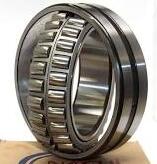
While ball bearings act as the sprinters, roller bearings enter as the marathon runners.
They distribute loads over a larger surface area, relieving pressure off a single point, making for a worthy option for heavy operations.
Spherical Roller Bearings
Issues like misaligned automotive joints benefit significantly from the spherical roller bearings.
They can handle loads from both axial and radial origins and adapt deflections in the shaft, making them the calm troubleshooters in the bearing family.
Cylindrical Roller Bearings
Cylindrical roller bearings are more like the backbone of industrial machinery.
They handle high radial loads and excel in applications like electric motors and gearboxes. It's the kind of bearing you want when the going gets tough.
Tapered Roller Bearings
See those smooth wheels on your bicycle – that's the taper doing the job.
They can take loads from both radial or axial origins, making them perfect for applications where versatility meets heavy-duty performance requirements.
Needle Roller Bearings:
While they appear weak for their slender appearance, the needle roller bearings are stronger than you think.
They are basically robust little warriors. They're the darlings of high load, low-speed applications, like those in automotive transmissions.
Plain Bearings: Because Simple Can Be Super
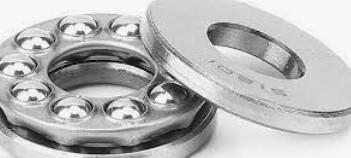
Not every bearing needs all the bells and whistles. Plain bearings, also known as bushings, keep it simple and effective.
Sleeve Bearings
If you look into a rotating shaft, you’ll see a cylindrical sleeve– that's a sleeve bearing in action.
Often found in appliances, they offer a smooth, cost-effective solution for light loads.
Thrust Washers
When axial loads need a buffer, thrust washers step in.
They're like the unsung heroes behind the scenes, preventing metal-on-metal friction and ensuring a smooth operation.
Flange Bearings
Give a sleeve bearing a little extra support, and you've got a flange bearing.
The added flange helps with axial loads, providing stability in applications like conveyor systems.
Thrust Bearings: Taking the Pressure Like a Pro
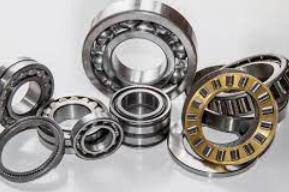
Speaking of axial loads, thrust bearings are the specialists in this department.
Thrust Ball Bearings
These are like the quarterbacks of the axial world, handling thrust loads in one direction.
Think of a Lazy Susan – smooth, controlled rotation with minimal effort.
Thrust Roller Bearings
When the game gets a bit rougher, thrust roller bearings step up.
They're designed to handle heavier axial loads and provide stability in applications like automotive transmissions.
Linear Bearings: Going Straight to the Point
Sometimes, you need to skip the circles and go straight. Linear bearings are the navigators in a linear motion system.
Linear Ball Bearings
Imagine the smooth glide of your printer head – that's the magic of linear ball bearings.
They facilitate precise linear motion in various applications, from CNC machines to 3D printers.
Linear Roller Bearings
Taking it up a notch, linear roller bearings handle heavier loads with ease.
Picture the smooth, controlled movement of a robotic arm – linear roller bearings play a key role in keeping things on track.
Spherical Bearings: Embracing the Curves
Life isn't always linear, and that's where spherical bearings come in – perfect for applications with a bit of swerve.
Spherical Plain Bearings
These are the free spirits of the bearing world, accommodating misalignments and angular movements.
They're like the yoga masters, flexible and adaptable, ensuring a smooth operation even when things get a little wonky.
Spherical Roller Thrust Bearings
When axial loads need a touch of curvature, enter spherical roller thrust bearings.
They handle heavy thrust loads and are commonly found in applications like marine propulsion systems.
Mounted Bearings: A Home for Bearings
Last but not least, let's talk about mounted bearings – because even bearings need a home.
Pillow Block Bearings
Picture a cozy pillow under your head – that's the comfort pillow block bearings provide for your shafts.
They're commonly used in conveyor systems, ensuring smooth movement with a dash of comfort.
Flange Mounted Bearings
When you need a bit more stability, flange mounted bearing types come into play.
The added flange provides support, making them ideal for applications like printing presses.
Conclusion
So, there you have it – a casual stroll through the different bearing types.
From the marathon runners to the sprinters, each type has its own unique charm and purpose.
The next time you marvel at the smooth rotation of your favorite gadget, remember, there are bearing types bearing silently working its magic to keep things rolling.
Are you looking for the best bearing types to buy? Ask for a quote or check out our products at Rolls Bearing today!
Top 10 Bearing Manufacturers in the UK in 2024
The top 10 bearing manufacturers in the UK may be too far out of your concern.
But what if I tell you that discovering them dramatically ups your chance of securing sophisticated bearing products?
Would you believe me?
I suggest that you believe me. This listing of these bearings UK manufacturers did not just pop up randomly.
Tracking sales percentages and overall presence in the global market served as the basis for the ranking.
Roll with us as we dive into the fascinating world of bearing manufacturers.
Best Bearing Manufacturers in the UK
1. SKF Bearings: The Pioneers

First on our list are SKF Bearings, the pioneers.
Having been established since 1907, SKF has since led in the bearing industry.
Operating in over 130 countries, they've earned their stripes by consistently pushing the boundaries of innovation and reliability.
The SKF bearings UK are the champion of innovation.
Having consistently pushed the boundaries, the company contributes significantly to the advancement in bearings.
In addition, they have introduced cutting-edge technologies.
These technologies are known to redefine the benchmarks for bearing performance.
From automotive to aerospace, SKF's command in the industry remains steadfast.
Their ability to innovate and adapt is what makes the company successful.
Transitioning from traditional ball and roller bearings to magnetic bearings and beyond, the company delivers to diverse industries.
In 2020, the SFK Sweden erected a total of 87 factories.
This racked them a total of $2, 714 million net profit and a $9, 530 million annual sales.
From these achievements, the company takes credit for 20% of the international market share.
Headquarters: Gothenburg, Sweden
Website: https://www.skf.com/ph
Telephone: 1-800-523-7514 within the US or +1-858-496-3627 outside of the US
Pinterest: https://www.pinterest.ph/Qifanbearing/skf-bearing/
Facebook: https://www.facebook.com/SKFGroup
Instagram: https://www.instagram.com/skfgroup/
YouTube: https://www.youtube.com/user/SKFOfficial
2. NSK Bearings: Precision Perfected

Second on our list is the NSK Bearings.
A company synonymous with precision, they are renowned for their commitment to quality.
NSK has been a key player in the UK's bearing landscape.
From automotive to industrial applications, their bearings boast precise engineering quality.
NSK bearings UK carved their own place in the world through their cutting-edge technology.
Their brand consistently introduces innovative solutions.
Meanwhile, they ensure their bearings are at the forefront of the industry.
Garnering a total of 30, 378 global employees in 2021, the company ranked number 3 in the global market share.
Headquarters: Shinagawa, Tokyo, Japan
Website: https://www.nsk.com/
Telephone: +81-3-3779-7111; +81-3-3779-743 (Headquarters)
Pinterest: https://www.pinterest.ph/pin/944278246848454102/
Facebook: https://www.facebook.com/NSK.Ltd
Instagram: https://www.instagram.com/nskamericacorp/
YouTube: https://www.youtube.com/user/NSKMotionAndControl
3. FAG Bearings: German Engineering in the UK

While stationed in Germany, FAG Bearings has firmly established its presence in the UK.
The brand is synonymous with German engineering.
Consequently, their bearings are a staple in various sectors, including aerospace and automotive.
It is in these sectors that their bearings are celebrated for their robustness and performance.
The brand's commitment to quality is rooted in its German heritage.
FAG Bearings is a standard when it comes to fusing traditional craftsmanship with cutting-edge technology.
What we get from this fusion is a product line that stands the test of time.
FAG Bearings continues to be a driving force in the UK's manufacturing landscape.
They have been garnering awards since 1955 up to the present.
The Manufacturing Prize in 2008, the BS5750 part 1 ISO 9001 in 1990,
and the Gold Award from Toyota Motor Europe in 2015 are among the few awards given to FAG bearings UK (respectively to their parent companies Schaeffler, LUK, and INA).
Headquarters: Danbury, 200 Park Ave, United States
Website: https://www.fagbearing.cc/index.html
Email: This email address is being protected from spambots. You need JavaScript enabled to view it..
Pinterest: https://www.pinterest.ph/acesbearinglmtd/fag-bearing/
Facebook: https://www.facebook.com/bearing.eric.7
Twitter: https://twitter.com/ERICBEARING
YouTube: https://www.youtube.com/@fagbearing2254
4. NTN Bearings: Engineering Excellence

NTN Bearings brings a touch of Japanese engineering excellence to the UK bearing market.
With a history stretching back to 1918, they've been crafting bearings that stand the test of time.
Their diverse product range delivers to industries ranging from agriculture to renewable energy.
Renowned for their drive for quality and excellence, NTN bearings UK is a stalwart in agriculture and renewable energy industries.
Their diverse product range encompasses ball bearings, roller bearings, and tapered roller bearings.
As industries evolve, NTN Bearings remains at the forefront.
Providing bearings that power most of UK machinery, they hold 25% of the market share.
Headquarters: Osaka, Japan
Website: https://www.ntnglobal.com/en/index.html
Telephone: +1-309-699-8600 / Fax : +1-309-699-8670
Pinterest: https://www.instagram.com/ntnelgincareers/
Facebook: https://www.facebook.com/ntnbearing/
Instagram: https://www.instagram.com/ntnelgincareers/
YouTube: https://www.youtube.com/channel/UCRpSR6cqk8ZiuU1cdskD-rA
5. Timken Bearings: Where Innovation Meets Tradition

Timken Bearings blends innovation with tradition.
Established in 1899, they continue to progress with today’s engineering needs.
With their drive for quality, Timken has succeeded to make its brand a staple in the UK's manufacturing landscape.
Headquartered in the United States but with several representations in the UK, the company has become a global leader.
Through the years, it left a mark on the manufacturing landscape.
Despite the continuous innovations in their units (bearings, gearboxes, and wheels), their traditional signature remains.
This seamless blend of innovation and tradition makes the company responsive.
Given such, the Timken bearings UK manages to keep the best practices to today.
Given their command in material science, friction management, and power transmission,
the company specializes in diagnosing malpractices in the engineering platform.
It is because of this that the company continues to bag awards to this day.
Part of their best practices is their customer-centered dealing.
In addition, the company suits its workplace to a diverse workforce. Because of that, it boasts as one of the greatest workplaces for diversity.
As of 2022, Timken rakes in a net sales worth of $4,496.7.
Its free cash flow has loosened up to about 285.4.
All these points account to the massive net generation exhibited by Timken in the overall market flow.
Headquarters: North Canton, Ohio, United States
Website: https://www.timken.com/
Telephone: 866-9TIMKEN (866-984-6536) (auto), 877-4TIMKEN (877-484-6536) (industrial)
Pinterest: https://br.pinterest.com/pin/665266176213866001/
Facebook: https://www.facebook.com/timken
Instagram: https://www.instagram.com/thetimkencompany/
YouTube: https://www.youtube.com/user/TheTimkenCompany
6. RHP Bearings: A Legacy of Reliability

RHP Bearings, part of the NSK group, brings a legacy of reliability to the table.
With roots dating back to 1916, RHP has been a trusted name in the UK's bearing industry.
Their bearings power everything from conveyor systems to agricultural machinery. Reliability is truly in their DNA.
Specializing in an extensive array of bearings, RHP caters to varied industries like automotive, agriculture, and industrial machinery.
The RHP bearings UK are fully committed to providing robust solutions to machinery needs in the UK and the world.
It is through this commitment that the company distinguished itself from other brands.
As part of the NSK Group, RHP benefits from the global expertise and innovation fostered within the larger organization.
The brand's bearings are not only crafted with precision, but also engineered to incorporate cutting-edge technologies.
The company is a proud provider of products such as linear technology components, steering systems, and rolling bearings.
Spherical roller bearings, cylindrical roller bearings, and the single row ball bearings are among the few products that keep the company’s brand of reliability.
In response to today’s call for environmental prioritization, the company ensured that their plants are certified ISO 14 001 environmental management system.
A reduced carbon footprint, a reliable manufacturing process, and an eco-friendly operation are just among the few conditions certified by the said ISO.
Headquarters: England, UK
Website: https://www.nsk.com/
Telephone: +81-3-3779-7111; +81-3-3779-743 (Headquarters)
Pinterest: https://www.pinterest.ph/pin/944278246848454102/
Facebook: https://www.facebook.com/NSK.Ltd
Instagram: https://www.instagram.com/nskamericacorp/
YouTube: https://www.youtube.com/user/NSKMotionAndControl
7. Barden Bearings: Precision Redefined

Acquired by the Schaeffler Group, Barden Bearings continues to redefine precision in the UK bearing market.
Their innovativeness bore them pioneering technology that ensures precision in all forms.
Barden Bearings, a member of the Schaeffler Group, is a name that resonates with precision and reliability in the bearing industry.
Having operated since 1942, Barden Bearings UK has pushed the boundaries of high-precision bearing technology.
Earning its reputation, and much like the top companies in this list, it has become a go-to choice in the industry for superior ball bearings.
Specializing in spindle bearings and ball bearings, the brand's manufacturing processes are known to be rigorous.
Despite that, it maintains practicality and the ergonomics of its factory setups. All of its bearings meet the standards for precision engineering.
Industries such as aerospace, machine tools, and medical equipment rely on Barden Bearings to deliver consistent performance in critical applications.
In a setting where precision is non-negotiable, Barden Bearings UK stands as a reputable name.
Headquarters: Plymouth, UK
Website: https://www.bardenbearings.co.uk/
Telephone: +44 (0) 1752 735555
Facebook: https://www.facebook.com/p/Barden-Bearings-100083365569347/?paipv=0&eav=AfYMBxjSeEu-nGixMc9LCBo7biH7Ht2hNAKig9EOkko3Hs81FZIelCEMtE495glE0N4&_rdr
LinkedIn: https://www.linkedin.com/company/the-barden-corporation-uk/?originalSubdomain=uk
8. Rolls Bearing Limited: Your One-Stop Bearing Shop
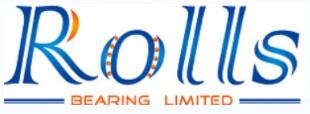
Rolls Bearing Limited covers a wide list of bearing units, functionality, and performance.
A specialized distributor of top-tier bearing materials, it caters to almost all industry needs.
Over the years, its reputation established it as the one-stop shop for bearing needs.
Whether you're in need of ball bearings, roller bearings, or tapered roller bearings, Rolls Bearing Limited is your source for all things bearings.
You might come to ask why we included the rolls Bearing Limited on the list while it’s not a manufacturer but a distributor.
Well, the answer is that the profit the company yields is equal to that of a sole manufacturer.
A major distributor to big-time manufacturers such as the Timken brand, INA and FAG bearings, NSK bearing, IKO bearing, and many more.
Headquartered in Wanchai, Hong Kong, its reach encompasses the UK and the world.
Headquarters:
Website: https://www.rollsbearing.com/
Telephone: 00852-21376052
Facebook: https://www.facebook.com/rollsbearings/
Twitter/ X: https://twitter.com/rollsbearing
9. GGB Bearings: Innovating in Tribology

GGB Bearings takes a unique approach by specializing in tribology – the science of friction, wear, and lubrication.
Their self-lubricating bearings are a game-changer in industries where maintenance is a critical factor.
The incorporation of self-lubricating technologies reduces the need for external lubrication, providing operational advantages in demanding applications.
GGB Bearings proves that innovation in tribology can revolutionize the bearing landscape.
Established as a global player, GGB Bearings delivers solutions that go beyond traditional bearings.
These solutions mitigate the challenges posed by friction and wear.
Optimum performance under pressure is the signature of its bearing performance.
GGB Bearings also links to a wide selection of industries– industrial manufacturing, automotive, energy, and aerospace.
Their bearings thrive in environments where traditional solutions may face limitations.
All in all, this achievement by the GGB bearings UK signifies a mindset that pushes the boundaries of what's achievable in the field of tribology.
The company's emphasis on research and development ensures that their bearings not only meet but often exceed industry standards.
GGB bearings UK has positioned itself as a reliable partner for those seeking bearings that bring a unique blend of innovation, durability, and reduced maintenance requirements to the table.
Ultimately, the brand, in its products and processes, has contributed to enhanced efficiency in various sectors.
Headquarters: Thorofare, New Jersey, United States
Website: https://www.ggbearings.com/en
Telephone: +1 856 689 4265
LinkedIn: https://www.linkedin.com/posts/ggb_ggb-bearings-railway-activity-6817749312408170496-2Qab/?trk=public_profile_like_view
YouTube: https://www.youtube.com/ggbearings
10. HKT Bearings: Niche Expertise
Last but certainly not least, HKT Bearings brings niche expertise to the table.
Specializing in spherical plain bearings and rod ends, they've carved a niche for themselves across rigorous applications.
When it comes to challenging environments, HKT bearings UK stands tall as a reliable choice.
Given that, they not only provide bearing solutions, they can also do it for you.
A “one-stop service for steel industry” is their company tagline.
Some of their popular products include high chromium rolls, enhanced ICDP rolls, semi HSS rolls, and many more.
Headquarters: Namdong-gu Incheon, Korea
Website: http://hktbearings.com/en/?ckattempt=1
Telephone: +82-32-822-7607FAX : +82-32-822-6116
Email: This email address is being protected from spambots. You need JavaScript enabled to view it.
Read on. There’s more to unpack in the bearings UK niche…
What to Look for in the Best Bearing Products
Looking for perfect bearing is like finding the right partner – you want reliability, trustworthiness, and a good fit.
Below are some helpful tips for spotting the best bearing products:
Start by checking out the bearing type: There are ball bearings, roller bearings, and even needle bearings, each designed for different applications. Make sure to match the bearing type with your specific needs.
Precision is the name of the game: Look for bearings with tight tolerances if you want smooth operations without any wobbling or jerking.
Consider the load capacity too. You wouldn't want your bearing to buckle under pressure, right?
Check the manufacturer's specifications to ensure it can handle the weight it'll be carrying.
Material matters: Just like choosing a durable pair of shoes, go for bearings made from quality materials.
Stainless steel or chrome steel are excellent choices for corrosion resistance and durability.
Think about the environment too – different conditions require different materials.
Lubrication is the unsung hero: Well-lubricated bearings mean less friction and wear.
Some bearings come pre-greased, while others may need periodic lubrication.
Choose the one that suits your maintenance preferences.
Consider the shields and seals: The shields and seals are like the protective armor for your bearings.
They keep out dirt and moisture. A well-sealed bearing lasts longer, performing at its best even in challenging environments.
So, in the grand quest for the ideal bearing, keep these pointers in mind, and you'll be on your way to a smooth, reliable partnership with your machinery.
Conclusion
And there you have it – the top 10 bearing manufacturers in the UK, each contributing to the smooth functioning of machinery across various industries.
Whether you're looking for precision, reliability, or innovation, these spin masters have it all covered.
The next time you encounter a smoothly running machine, remember that behind the scenes are the graceful workers under pressure – the bearings from these top-notch manufacturers.
Looking for a quote? Contact us today at Rolls Bearing Limited!
The Benefits of Hybrid Ceramic Bearings in Electric Motors
Discover the advantages of ceramic hybrid bearings in electric motors.
Improve efficiency, increase speed, and reduce vibrations for optimal performance.
Ceramic hybrid bearings in electric motors offer remarkable benefits, optimizing efficiency, speed, and precision.
In this article, we delve into the advantages of these bearings, explore their applications in different industries, compare them with other bearing technologies, and provide maintenance tips.
The Benefits of Hybrid Ceramic Bearings in Electric Motors:
1.Improved Efficiency and Energy Savings
2.Higher Speed Capabilities
3.Quieter Operation and Reduced Vibration
4.Enhanced Precision and Control
Discover the impact of hybrid ceramic bearings on electric motor performance and learn about their applications in industries such as manufacturing, transportation, and renewable energy.
Gain insights into the maintenance and care required for these bearings.
Join us to unlock the power of ceramic hybrid bearings for electric motor performance.
What are ceramic hybrid bearings?
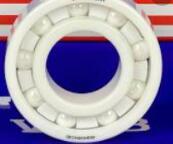
Hybrid ceramic bearings are advanced bearing solutions that combine the advantages of both ceramic and steel materials.
These bearings feature ceramic balls, typically made of silicon nitride, while the inner and outer rings are usually made of steel.
This combination offers several advantages over traditional steel bearings and full ceramic bearings in electric motors.
Impact of Hybrid Ceramic Bearings on Electric Motor Performance:
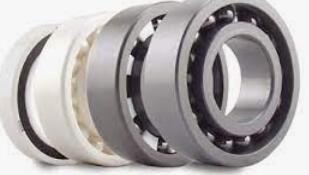
A. Improved Efficiency and Energy Savings:
Hybrid ceramic bearings reduce friction and offer superior wear resistance compared to traditional steel bearings.
The ceramic balls have a much smoother surface finish, resulting in reduced friction and lower heat generation during operation.
As a result, electric motors equipped with hybrid ceramic bearings experience improved efficiency, leading to energy savings and increased overall performance.
B. Higher Speed Capabilities:
The lower friction and lighter weight of hybrid ceramic bearings enable electric motors to operate at higher speeds.
Ceramic balls have a lower density than steel balls, which reduces the centrifugal force acting on the balls at high rotational speeds.
This characteristic allows electric motors to achieve faster acceleration and higher RPM (revolutions per minute) capabilities,
making them suitable for applications that demand rapid and precise movements.
C. Quieter Operation and Reduced Vibration:
Hybrid ceramic bearings offer exceptional shock-absorbing capabilities and reduce the level of vibrations within electric motors.
The ceramic balls dampen vibrations more effectively compared to steel balls, resulting in smoother and quieter motor operation.
This advantage is particularly important for applications where noise reduction is a priority, such as in electric vehicles or precision equipment.
D. Enhanced Precision and Control:
The high stiffness and dimensional stability of hybrid ceramic bearings contribute to improved precision and control in electric motor applications.
These bearings exhibit minimal deformation under load, allowing for precise positioning and accurate control of the motor's rotational movement
The reduced elastic deformation also leads to better repeatability, making hybrid ceramic bearings suitable for applications requiring high levels of precision, such as robotics or CNC machines.
Types of Hybrid Ceramic Bearings for Electric Motors:
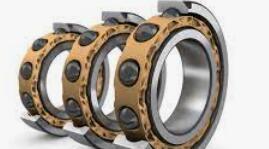
A. Angular Contact Ball Bearings:
Angular contact ball bearings are designed to handle both radial and axial loads.
These bearings have a contact angle that enables them to support higher axial loads and provide excellent rigidity.
They are commonly used in electric motor applications that require high-speed rotation and thrust capacities, such as machine tools, pumps, and compressors.
B. Deep Groove Ball Bearings:
Deep groove ball bearings are versatile and widely used in electric motors due to their low friction and high-speed capabilities.
They can accommodate both radial and axial loads and are suitable for applications with moderate to high radial loads.
Deep groove ball bearings find applications in electric motors used in appliances, power tools, fans, and many other industrial and consumer products.
C. Cylindrical Roller Bearings:
Cylindrical roller bearings are designed to withstand high radial loads and moderate axial loads.
These bearings have high radial rigidity and can accommodate misalignment, making them suitable for electric motor applications that experience heavy loads and variable operating conditions.
Cylindrical roller bearings are commonly used in electric motors for conveyors, pumps, and heavy machinery.
Applications for Hybrid Ceramic Bearings in Electric Motors:
A. Industrial and Manufacturing Processes:
Hybrid ceramic bearings find extensive applications in various industrial processes, including manufacturing equipment, machining centers, robotics, and automation systems.
The improved efficiency, higher speed capabilities, and enhanced precision of these bearings contribute to the overall productivity and performance of these systems.
B. Transportation Industry:
The transportation industry, including electric vehicles (EVs) and hybrid electric vehicles (HEVs), greatly benefits from hybrid ceramic bearings.
The reduced weight, lower friction, and enhanced efficiency of these bearings contribute to increased range, improved fuel efficiency, and extended lifespan of electric motors in vehicles.
C. Renewable Energy Sources:
Hybrid ceramic bearings play a crucial role in the renewable energy sector, particularly in wind turbines and solar power systems.
In wind turbines, hybrid ceramic bearings enable efficient power generation by reducing friction losses and allowing for higher rotational speeds.
These bearings also exhibit excellent resistance to corrosion, which is important in offshore wind farms where exposure to harsh environments is common.
In solar power systems, hybrid ceramic bearings are used in tracking mechanisms and heliostats to ensure precise solar panel positioning for optimal sunlight capture.
Maintenance and Care for Hybrid Ceramic Bearings in Electric Motors:
A. Proper Handling Techniques:
When handling hybrid ceramic bearings, it is important to avoid dropping or impacting them, as ceramic balls can be more brittle than steel balls.
Care should be taken to prevent any damage to the ceramic components, as this can compromise their performance.
B. Cleaning Procedures:
Regular cleaning is essential to maintain the performance of hybrid ceramic bearings.
They should be cleaned using appropriate solvents or cleaning agents recommended by the bearing manufacturer.
It is important to remove any contaminants that may accumulate on the bearing surfaces, as these can increase friction and reduce efficiency.
C. Lubrication Requirements:
Hybrid ceramic bearings typically require lubrication to ensure smooth operation and reduce wear.
It is crucial to use lubricants specifically designed for hybrid ceramic bearings and follow the manufacturer's guidelines regarding lubrication intervals and types of lubricants to be used.
Over-lubrication should be avoided, as it can lead to increased friction and overheating.
Comparison with Other Bearing Technologies for Electric Motors:
A. Traditional Steel Bearings:
Compared to traditional steel bearings, hybrid ceramic bearings offer lower friction, improved efficiency, and reduced heat generation.
They also have higher speed capabilities and better resistance to corrosion.
However, hybrid ceramic bearings tend to be more expensive than steel bearings, and their ceramic components may be more susceptible to damage if mishandled.
B. Full Ceramic Bearings:
Full ceramic bearings, unlike hybrid ceramic bearings, have both the inner and outer rings made of ceramic material.
While full ceramic bearings offer superior corrosion resistance and higher temperature capabilities, they may not be as durable as hybrid ceramic bearings due to the increased brittleness of ceramics.
Additionally, full ceramic bearings are generally more expensive and have limitations in load capacity and shock resistance compared to hybrid ceramic bearings.
C. Selection Factors for Choosing the Best Option:
When selecting the best bearing option for electric motors, several factors should be considered, such as load requirements, operating conditions, speed capabilities, cost, and maintenance needs.
Hybrid ceramic bearings are suitable for applications where high speeds, reduced friction, and improved efficiency are critical.
Traditional steel bearings may be more cost-effective for low to moderate speed applications with lower performance requirements.
Full ceramic bearings are ideal for extreme conditions involving high temperatures, corrosive environments, or specialized applications where weight reduction is crucial.
Recommendations for Choosing the Best Bearing Option for Electric Motors:
1.Assess the specific requirements of the electric motor application, including load conditions, speed requirements, and operating environment.
2.Consider the cost-effectiveness of each bearing option based on the expected performance and maintenance needs.
3.Evaluate the benefits of hybrid ceramic bearings, such as improved efficiency, higher speed capabilities, and reduced vibrations, and weigh them against the higher cost compared to traditional steel bearings.
4.If the application involves extreme conditions or specialized requirements like high temperatures or corrosive environments, full ceramic bearings may be the preferred choice despite their higher cost and potential limitations in load capacity.
5.Consult with bearing manufacturers or industry experts to determine the most suitable bearing option based on the specific application and performance expectations.
By considering these factors, electric motor manufacturers can make informed decisions when selecting the best bearing option to optimize the performance, efficiency, and reliability of their systems.
Conclusion
Unlock the power of ceramic hybrid bearings in electric motors and experience improved efficiency, higher speeds, reduced vibrations, and enhanced precision.
Explore their applications across industries and understand the maintenance requirements. Make an informed choice to optimize your electric motor's performance and efficiency.
What Are Ball Bearing Balls?
Who’d think that an essential glue to the massive machinery industry is a set of tiny balls?
If you think so, then you are one of the few knowledgeable people.
If not, it’s fine. Ball bearing balls are easily missed.
Besides their obvious size, bearing balls are basically hidden from sight.
The perfect science of bearing balls is responsible for their efficiency, security, and durability.
Digging into the science of this invention can provide bearing buyers the high purchasing advantage.
Although bearings are almost completely alike, they greatly vary in terms of function, design, material, size, and many more.
If you’re all set, then join me in this article as we delve into the world of bearing balls.
What are Ball Bearing Balls?
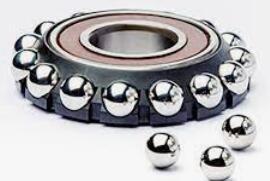
At its core, a ball bearing ball is a small, accurately-designed sphere that plays an important role for ball bearings.
Bearing balls, in turn, serve to eliminate friction and ensure smoothness in the rotation of any operation.
These operations vary from the mundane home appliances to the more massive aerospace, automotive, and motor machines.
Composition and Materials
The balls’ fundamental building blocks are specifically chosen for these abilities – durability, strength, and resistance to wearing.
The typical materials that compose the balls include chrome steel and stainless steel, both recognized for their hardness and corrosion resistance.
In recent years, ceramic materials such as silicon nitride have gained prominence due to their unique properties, including lower density, higher hardness, and resistance to thermal expansion.
The choice of material is crucial as it determines the ball's ability to withstand the operating conditions of the machinery it serves.
Whether enduring high-speed rotations, heavy loads, or corrosive environments, the material composition of the ball bearing ball must align with the specific demands of the application.
The Anatomy of Precision
Its precision in engineering is what makes the balls a super-efficient invention.
Manufacturers of the tool utilize high-tech factory techniques to ensure spotless finished products.
Computer numerical control (CNC) machining, for instance, is employed to ensure that each ball is uniform in size, perfectly round, and possesses a smooth surface finish.
Precision, in this case, encompasses both the manufacturing processes and tight quality control protocols observed in the factory.
Finally, automated scanning, filtering, and inspection systems are installed to see that every ball exacts the set standard to the tee.
The pursuit of precision is not merely a technical detail; it is the bedrock on which the reliability and efficiency of the balls rest.
The Role within Ball Bearings
The primary role of the balls is to optimize rotation within ball bearings – a seamless one at that.
A ball bearing usually consists of an outer race, an inner race, and the ball bearing balls held between them.
The races, often circular tracks or rings, guide the movement of the balls, distributing the load evenly and minimizing friction.
As crucial elements for rotation, the balls decrease the sliding friction that would otherwise occur between the surfaces of the races.
In the absence of friction, machine sustainability (premature wearing prevented) and optimization are guaranteed.
Versatility in Applications
The best of the balls is their versatility across varied operations, fitting, and placement.
If there’s one thing you should look for a ball, that would be its adaptive quality.
In the automotive sector, for instance, balls support the smooth rotation of several engine parts, gearbox components, and wheels.
In the aerospace industry, where safety and precision are a paramount, balls ensure the flawless operation of the components of an aircraft.
What is the science behind ball bearing balls?
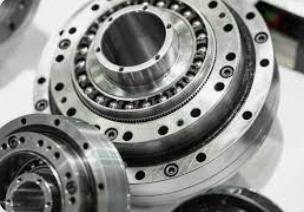
The science behind the balls’ functionalities are as follow:
Friction-Reduction
Balls address this challenge by rolling between the races rather than sliding.
Rolling friction is significantly lower than sliding friction, allowing for more efficient energy transfer and minimizing wear on the components.
The small contact points between the balls and the races distribute the load evenly, further reducing the risk of localized wear.
Load Distribution
Balls are effective in distributing loads evenly across the races. At the onset of load pressure, the balls evenly spread the direction of the force across the bearing surface.
As a result, load pressure is not concentrated only in one point. This equal distribution of load pressure contributes to the longevity of the bearing and the machinery it serves.
Precision Tolerance
The precision required and indicated in the production of the balls can be measured in tolerance levels.
Tolerance is the allowable deviation from a specified dimension, making sure that each ball is consistent in shape and size.
High tolerance levels are crucial in keeping the bearing system integrity intact.
On the other hand, deviations in size or shape could lead to uneven distribution of load, compromised performance, and increased friction.
Materials Engineering
The selection of materials for the balls is another defining aspect of their design.
Vast machinery operations demand that different material properties and advancements be exploited into the tool.
Chrome steel has since served as a main material for the balls given its particular hardness and resistance to wearing.
For corrosion resistance, stainless steel ranks as another superior material.
Ceramic materials, on the other hand, offer a unique set of properties, including lower density and higher hardness, leading to reduced weight and increased durability.
The strategic combination of material properties with precision engineering results in the balls that meet the specific demands of their intended applications.
What are its applications and impacts?
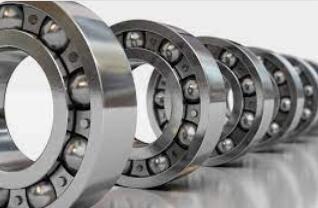
The applications and impacts of the balls are as follow:
Automotive Industry
The automotive sector has obviously benefitted and continues to benefit from the ball products.
From the wheel hubs to the transmission systems, the balls contribute to the smooth and efficient operation of vehicles.
In wheel bearings, they endure the forces associated with steering, acceleration, and braking, ensuring a comfortable and safe driving experience.
Aerospace and Aviation
Precision and reliability are paramount in aerospace and aviation applications.
Ball bearing balls are integral to the functionality of components such as aircraft engines, landing gear systems, and control surfaces.
Their ability to withstand high speeds and dynamic loads makes them crucial in ensuring the safe and efficient operation of aircraft.
Manufacturing and Industrial Machinery
The manufacturing sector relies heavily on ball bearing technology to facilitate the smooth operation of industrial machinery.
From conveyor systems to robotic arms, the balls play a vital role in minimizing friction and supporting the heavy loads associated with manufacturing processes.
Their adaptability to diverse conditions makes them indispensable in this dynamic environment.
Medical Devices
In the realm of medical devices, where precision is critical, the balls find applications in various instruments.
From surgical equipment to diagnostic devices, these miniature components contribute to the precise movement and operation of delicate medical tools.
The reliability and precision of ball bearing balls in this context are vital for ensuring the success of medical procedures.
Consumer Electronics
The consumer electronics industry benefits from the versatility and precision of ball bearing balls in various applications.
In everything from computer hard drives to electric fans, these components contribute to the efficiency and reliability of rotating elements.
Their silent operation and longevity make them ideal for enhancing the user experience in electronic devices.
What are some of its innovations and future trends?
Some of its innovations and future trends are as follow:
Hybrid Ball Bearings
The quest for continuous improvement has led to the development of hybrid ball bearings.
These bearings combine traditional materials like steel with advanced ceramics, creating a hybrid that leverages the best properties of both.
Hybrid ball bearings aim to reduce friction even further, increase durability, and enhance overall performance.
The combination of steel races with ceramic ball bearing balls has proven effective in demanding applications where optimal performance is crucial.
Advanced Coatings
Ongoing research in materials science has led to the exploration of advanced coatings for ball bearing balls.
These coatings may include nanocomposites, polymers, or even diamond-like carbon.
The goal is to further enhance the wear resistance of the bearing balls, extending their lifespan and reducing the need for frequent maintenance.
Smart Bearings
The integration of sensor technology into bearings is another avenue of innovation.
Smart bearings, equipped with sensors, can monitor factors such as temperature, vibration, and load distribution.
This real-time data enables predictive maintenance, allowing for proactive measures to be taken before a component fails.
The implementation of smart bearing technology has the potential to revolutionize maintenance practices, increase overall system reliability, and reduce downtime in industrial settings.
Conclusion
The often-overlooked ball bearing balls basically holds machinery together.
A tool made from precision and flawlessness, the quality of the ball bearing balls determine the performance of the machine.
Whether it be an automotive, aerospace, and motor machine, bearing balls are expected to be of utmost design.
Learning about this tool based on its impact and applications, innovations, material composition, and its overall science provide us a glimpse into the complex elements of machinery.
Ultimately, further knowledge on the balls provide operators significant considerations in choosing the right balls for their needs.
The Benefits of Using Journal Bearings
Unlock the Power of Journal Bearings: Discover their high load capacity, low friction, self-lubrication, and more. Optimize your machinery's performance now!
Journal bearings are essential components in various industries, playing a crucial role in supporting rotating machinery and reducing friction between moving parts.
Their unique design and properties offer a range of benefits that contribute to improved performance, efficiency, and durability.
Advantages of using journal bearings:
1.High load capacity
2.Low friction
3.Self-lubricating
4.Reduced vibration and noise
5.Long service life
In this article, we will explore the advantages of using journal bearings, from their high load capacity and low friction to their self-lubricating nature and long service life.
Discover how these bearings can optimize machinery operation and enhance overall productivity.
What are Journal Bearings?
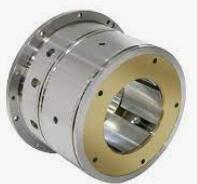
Journal bearings are a type of plain bearing that play a crucial role in supporting rotating machinery and reducing friction between moving parts.
They consist of a shaft, known as the journal, and a bearing surface.
The journal rotates within the bearing surface, creating a fluid film of lubrication between them to facilitate smooth operation.
Types of Journal Bearings
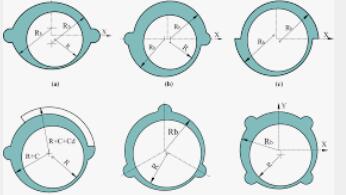
There are several types of journal bearings available, each designed to suit different applications and operating conditions.
The three most common types are hydrodynamic journal bearings, hydrostatic journal bearings, and Babbitt-lined journal bearings.
Hydrodynamic Journal Bearings
Hydrodynamic journal bearings rely on the rotation of the journal to generate a hydrodynamic wedge of lubricant between the journal and the bearing surface.
This fluid film prevents direct contact between the surfaces, reducing friction and wear.
These bearings are highly efficient and cost-effective, making them widely used in various applications.
Hydrostatic Journal Bearings
Hydrostatic journal bearings differ from hydrodynamic bearings in that they use an external pump to supply pressurized lubricant to the bearing surface.
This pressurized lubrication creates a fluid film that separates the journal from the bearing.
The use of pressurized lubrication enhances the load-carrying capacity of the bearing and provides greater control over its performance characteristics.
Hydrostatic journal bearings are commonly found in high-speed machinery and precision applications.
Babbitt-lined Journal Bearings
Babbitt-lined journal bearings have a thin layer of Babbitt material, a soft and low-friction alloy, on the bearing surface.
This lining offers excellent wear resistance and reduces friction between the journal and the bearing.
Babbitt-lined journal bearings are frequently used in large industrial equipment and heavy machinery where high loads and durability are required.
Advantages of Using Journal Bearings
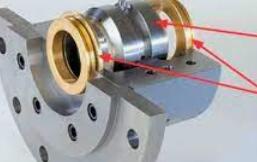
Journal bearings offer numerous advantages over other bearing types, making them a popular choice in various industries. The key benefits include:
High Load Capacity
Journal bearings have a high load-carrying capacity due to the hydrodynamic or hydrostatic film of lubrication.
The fluid film supports and distributes the load, allowing the bearings to withstand heavy machinery loads and significant radial and axial forces.
Low Friction
The presence of a fluid film of lubrication in journal bearings reduces friction between the rotating journal and the bearing surface.
This low-friction characteristic minimizes wear and energy losses, leading to improved overall machinery efficiency and reduced power consumption.
Self-Lubricating
One of the notable advantages of journal bearings is their self-lubricating nature.
The rotation of the journal generates the necessary hydrodynamic or hydrostatic pressure to create and maintain the lubricating film between the surfaces
. This self-lubrication eliminates the need for additional lubricants and simplifies maintenance requirements.
Reduced Vibration and Noise
The fluid film of lubrication in journal bearings acts as a cushion, dampening vibrations and reducing noise.
By minimizing vibrations, journal bearings contribute to smoother operation, improved performance, and enhanced overall comfort in various applications.
Long Service Life
With proper maintenance and operating conditions, journal bearings can have a long service life.
The self-lubricating design and reduced wear due to low friction contribute to their longevity.
Additionally, advancements in bearing materials and manufacturing processes have further increased their durability and reliability.
Applications of Journal Bearings
Journal bearings find extensive applications across various industries due to their beneficial characteristics. Some of the common applications include:
Turbines and Generators
Journal bearings are used in turbines and generators to support the rotating shafts.
The high load capacity and self-lubricating nature of journal bearings ensure reliable and efficient operation in power generation plants.
Pumps and Compressors
Journal bearings are widely employed in pumps and compressors to facilitate smooth rotation and reduce friction.
The low-friction properties of journal bearings help minimize energy losses and extend the equipment's lifespan.
Automotive Engines
Journal bearings are essential components in automotive engines, supporting various parts such as crankshafts, camshafts, and connecting rods.
The self-lubricating and high-load capacity attributes of these bearings enhance the performance and longevity of the engine, contributing to smoother operation and improved fuel efficiency.
Industrial Equipment
Journal bearings are extensively used in industrial equipment, including gearboxes, conveyors, and rotating machinery.
Their ability to withstand heavy loads and reduce friction ensures reliable and efficient operation of these critical systems.
Conclusion
In conclusion, journal bearings offer numerous benefits, including high load capacity, low friction, self-lubrication, reduced vibration and noise, and long service life.
These advantages make them a preferred choice in various applications ranging from power generation to automotive and industrial machinery.
The continuous advancements in bearing technology further enhance their performance and reliability,
making journal bearings indispensable components in supporting rotating machinery and ensuring smooth operation.





